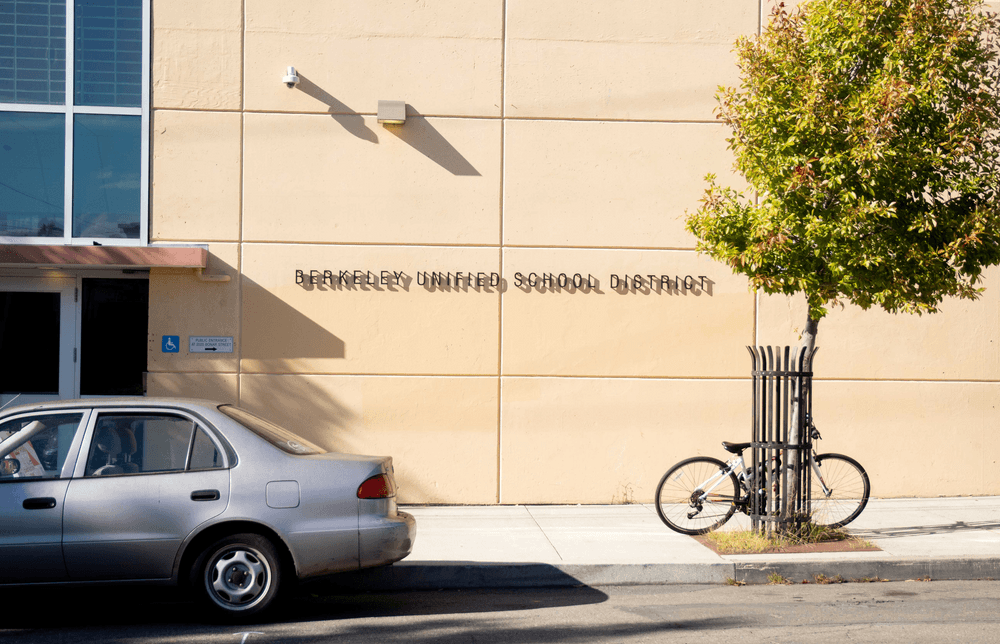Score gaps between Black and white BUSD students among highest in state
Statewide test score data for 2022 reveal imbalance in math and English performance
November 08, 2022

Kimberly Fong | Staff
In 1968, Berkeley Unified School District, or BUSD, was among the first in the United States to implement a busing plan to fully racially integrate its schools. More than 50 years later, school board officials still grapple with how to advance equity for its underserved students.
California students from third through eighth grades as well as 11th grade took the Smarter Balanced Assessments, or SBA, in spring 2022. In October 2022, the California Department of Education released English language arts, or ELA, and math SBA score data for districts across the state.
The racial performance gaps in math and ELA are the fourth and fifth highest in the state, a Daily Californian analysis of California Department of Education data found.
California school districts with the largest gaps in Black and white students meeting state standards on the 2022 Smarter Balanced Assessments in math
- Difference in performance
- White students
- Black students
California school districts with the largest gaps in Black and white students meeting state standards on the 2022 Smarter Balanced Assessments in English language arts
- Difference in performance
- White students
- Black students
The charts above show the five California school districts with the largest score gaps between Black and white students in ELA and math across all grade levels.
The statewide Smarter Balanced Assessments have four main achievement levels for its assessments in ELA and math: “standard not met,” “standard nearly met,” “standard met” and “standard exceeded.” The data above reflect the percent of students for which the state's standard was met or exceeded.
Data for some student groups at some school districts were not available, and thus were not included in this Daily Californian analysis. Data are from the California Department of Education.
In math assessments, 18.73% of BUSD's Black students met or exceeded the state standard. In contrast, 74.07% of BUSD's white students met or exceeded the standard. This 55.34% disparity was the fourth largest among California school districts and the largest among Alameda County districts.
83.04% of white students, but only 30% of Black students, in BUSD met or exceeded the state standard in ELA assessments. The 53.04% gap was the fifth largest in the state.
With the exception of the Los Angeles County Office of Education, school districts with the five largest score disparities between Black and white students are in Bay Area counties — Alameda, San Mateo or San Francisco.
The Oct. 26 Berkeley school board meeting addressed this disparity in scores between Black and white students in a presentation by district administrators.
The presentation also pointed to other disparities within the district. While 58% of BUSD graduates in 2022 met course load and GPA requirements to apply to UC and CSU schools, only 23% of Black students and 47% of Latine students were eligible to apply. Furthermore, 45.4% of houseless students and 26.9% of Black students missed at least a tenth of the 2021-22 academic year, according to the presentation.
Compared to white and Asian students, sense of belonging also suffers among Black and Latine students in higher grade levels, according to the California Healthy Kids Survey. 67% and 61% of BUSD's Asian and white 11th graders felt connected to their school, respectively. Meanwhile, only 43% and 47% of Black and Latine students, respectively, felt connected to their BUSD school.
However, the fact that BUSD's score gaps between Black and white students tower above most California school districts was not shared during the meeting.
“It's one thing to look at these broad patterns and trends. You can look at grade level performance. You can look at subgroups.” said Ruth Steele Brown, BUSD director of research, evaluation and assessment, during the meeting. “But, at the end of the day you have to find each kid, and you have to understand why each child is performing a certain way.”
BUSD staff and school board members discussed existing programs that aim to improve instruction and rectify inequities in student belonging and achievement. Response to Instruction and Intervention, the Umoja program and the African American Success Framework were among those mentioned.
However, Berkeley school board president Ka'Dijah Brown saw the data as a call to revamp the district's current approaches — and potentially pursue new intervention tactics.
“We are in crisis,” Brown said during the meeting. “Time and time again we talk about this achievement gap, and this is the achievement gap right here in front of our eyes.”
In response to Brown's concerns about chronically absent students, BUSD superintendent Enikia Ford Morthel claimed that plans to increase educators' and principals' access to student data would help inform more individualized interventions.
With regard to the other disparities revealed by the data, Ford Morthel confirmed BUSD is facing a crisis. Ford Morthel added that more discussion is due to help close the racial and socioeconomic gaps between students.
“At some point, President Brown, we're going to have to have a hard conversation about belief systems, mindsets and what it means to be an anti-racist teacher,” Ford Morthel said during the meeting.
Editor's note: This is the first part of a multi-part series on minorities, achievement and sense of belonging in the Berkeley Unified School District.
Cameron Fozi is the projects editor. Contact him at cfozi@dailycal.org, and follow him on Twitter at @cmrnfzi.
About this story
This project was developed by the Projects Department at The Daily Californian.
Data for this project come from the California Department of Education.
Questions, comments or corrections? Email projects@dailycal.org.
Code, data and text are open-source on GitHub.
Support us
We are a nonprofit, student-run newsroom. Please consider donating to support our coverage.
Copyright © 2022 The Daily Californian, The Independent Berkeley Student Publishing Co., Inc.